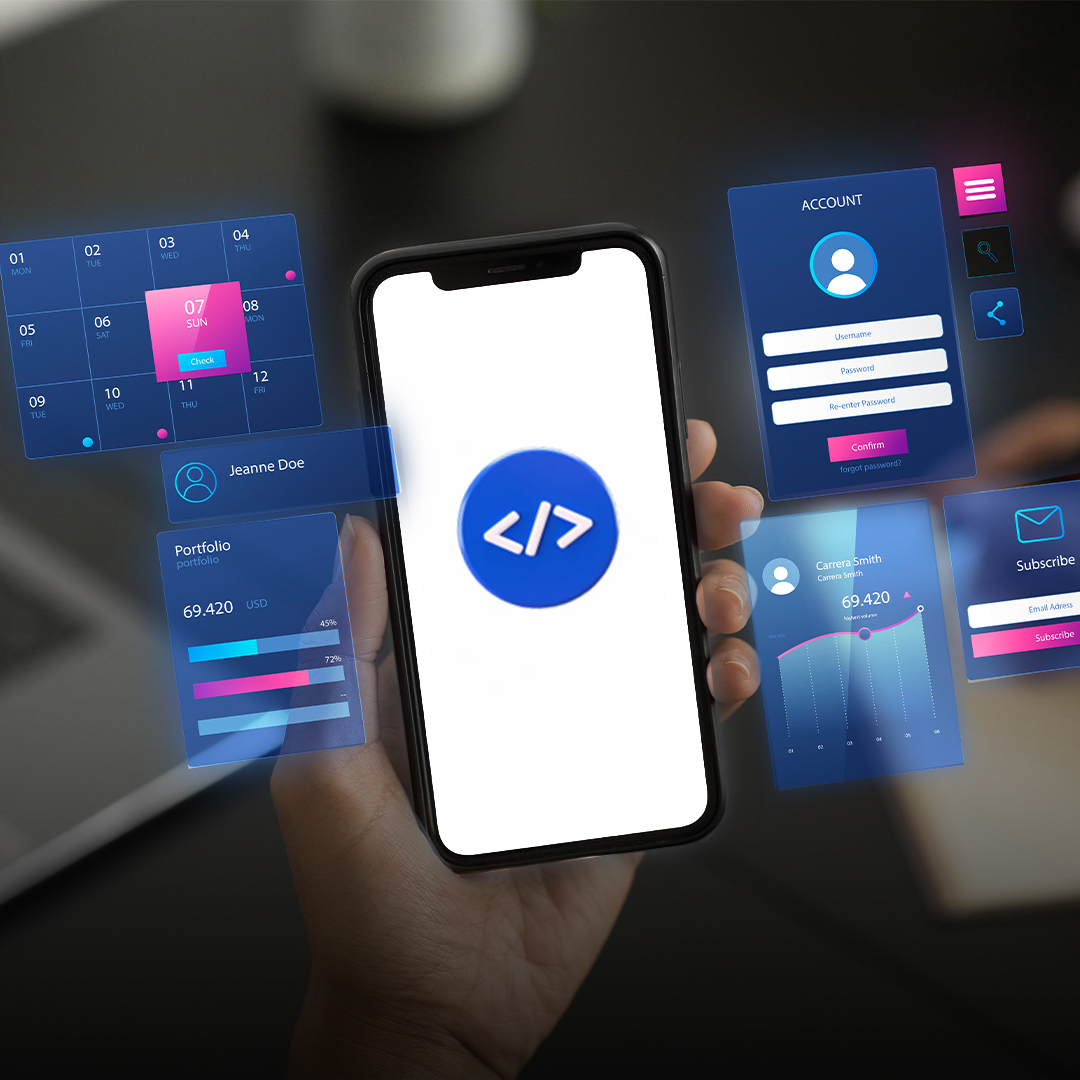Reaching Full Business Potential With Cross-Platform Mobile App Development
Cross-platform mobile app development might be a difficult notion. The term "platform" may refer to a multitude of things. This includes hardware types such as mobile phones or desktop computers, mobile development frameworks, or operating systems such as Windows, Linux, iOS, or Android. This is a major cause of misunderstanding in mobile app development services. This range of interpretations frequently leads to misreadings.
Let us disclose that cross-platform mobile app development techniques differ between desktop and mobile devices. The basic idea behind mobile app solutions is to employ a single, reusable codebase across all platforms. This is not necessarily the case with desktop applications and consoles, where various versions may require unique codebases.
Also, some experts use "cross-platform" and "hybrid" interchangeably, which is not right for mobile platforms. So, let’s discuss the benefits of cross-platform mobile development and the differences between the two types of mobile applications.
In the end, you should have a better understanding of cross-platform frameworks, app development tools, and how they can help your projects improve business efficiency. So, let’s go for it.
What Really Is Cross-Platform Mobile App Development?
When we talk about "cross-platform mobile development," we are talking about one of the methods for developing applications for mobile devices across several platforms. Overall, there are three major methods for mobile app development services, each with its own advantages and disadvantages:
- Cross-Platform: This software is compatible across multiple mobile platforms as they often employ a single codebase. Most of the code is duplicated or reused across several mobile operating systems. Specialized cross-platform frameworks enable this, allowing developers to eliminate constraints while giving a "native-like" user experience.
- Native: This kind of application is developed solely for a specific platform. It is intended to use all necessary software and hardware features available on that platform. Unlike cross-platform mobile app development, developers only focus on a single mobile platform making the code non-reusable across many devices.
- Hybrid: This method of mobile app development services incorporates both native and web technologies. Developers produce code in web development languages such as CSS and HTML. Then they encapsulate the code in a "native" shell. Hybrid applications are quite similar to cross-platform apps. They frequently have slight variations. As a result, many professionals treat them similarly for simplicity.
Android and iOS are the only two operating systems that dominate the mobile device business today. As per statistics, they account for more than 90% of the market, rendering alternative operating systems essentially unimportant. That is why a "cross-platform mobile application" typically means software that runs both on Android and iOS devices.
Key Benefits of Cross-Platform Mobile App Development
1. A Single Code for all Platforms
The fundamental idea behind cross-platform mobile apps is to use a single codebase, fully or partially, across all target platforms. While "reusable code" has some limits, it also provides additional benefits.
2. Reduced Platform Coverage Expenses
"One code fits all" is a cost-effective method that makes the most of a restricted budget. Cross-platform development eliminates the need for different teams to handle Android and iOS versions.

Furthermore, native app developers charge more and are harder to find. Using a single team with the same stack of technology for all platforms streamlines the process while considerably lowering expenses.
3. Reduced Time to Deliver A Finished Software Product
Using a single codebase and team simplifies software development compared to managing two teams concurrently. Managers, for example, do not need to synchronize the development of two teams to produce a software product simultaneously for iOS and Android. Two native versions of an app would need double coding, testing, and so on.
4. Greater User Coverage
Cross-platform mobile development allows an application to reach more people. This strategy provides a reasonable level of interoperability with various operating systems. It also preserves a "native" experience, allowing users to engage with an app more comfortably. If a project's budget does not allow for the creation of two independent native programs, cross-platform development is preferable.
Top Tools and Technologies for Cross-Platform Mobile App Development

Throughout the years, developers have produced several app development tools for developing cross-platform apps. Here are the top five most prominent cross-platform frameworks used for mobile app solutions for this purpose:
1. React Native
Pros: Meta launched React Native in 2015, allowing developers to build fluid, customized user interfaces by displaying React components as native platform elements. It is compatible with smart TVs and virtual reality,
and its modular architecture and extensive library ecosystem enable popular programs like Facebook, Skype, and Shopify.
Cons: In resource-intensive applications, the JavaScript-native bridge may cause performance concerns. Custom modules may be required due to limited native API support, adding complexity.
2. Flutter
Pros: Google's Flutter is known for its versatility and performance, providing high-speed apps with smooth animations at 60/120 frames per second. Its unique rendering engine generates native-like widgets, contributing to its adoption in popular programs such as Google Pay and eBay.
Cons: Dart might be challenging for certain developers, especially those acquainted with Java or C#. Flutter apps may potentially have greater starting sizes than React Native, and their ecosystem is still expanding.
3. Apache Cordova
Pros: Cordova enables app creation with web technologies such as HTML, CSS, and JavaScript, making it accessible to web developers. Companies like IBM and Adobe use it because it interacts readily with native capabilities via plugins.
Cons: Performance can be a concern because of the dependency on WebView, which may not match the performance of native components. Its focus on mobile platforms is more limited than other frameworks, and preserving native functionality might increase complexity.
4. Ionic
Pros: Ionic apps may experience performance issues compared to entirely native apps, especially in complex scenarios. It blends web and native code (Sass, CSS, and HTML) to increase flexibility. Its extensive collection of pre-designed components, along with the usage of Angular or React, accelerates development, and it has prominent customers such as Southwest Airlines.
Cons: Ionic apps may experience performance issues when compared to completely native apps, particularly in complicated settings. Due to the reliance on web technology, performance is linked to WebView efficiency, necessitating platform-specific code for best results.
5. Xamarin
Pros: Microsoft created Xamarin, which allows cross-platform development for Android, iOS, tvOS, watchOS, and other platforms using C# and.NET. It enables code sharing while maintaining native speed and API access, making it popular among enterprises such as Siemens and Pinterest.
Cons: Xamarin programs are often larger and developers inexperienced with C# will face a steeper learning curve. Moreover, many platform-specific functionality may need custom native code, limiting the benefits of code sharing.
Closing Thoughts
The cross-platform mobile app development process might be perplexing at first. However, when you learn more about it, you will be amazed by its countless benefits. Even tech giants and many more IT heavyweights embrace modern cross-platform programming frameworks. These technologies have grown quite effective in providing a native-like experience across several platforms owing to the efforts of a dedicated community.
However, you must always partner with an established cross-platform mobile app development company to develop competitive products.


